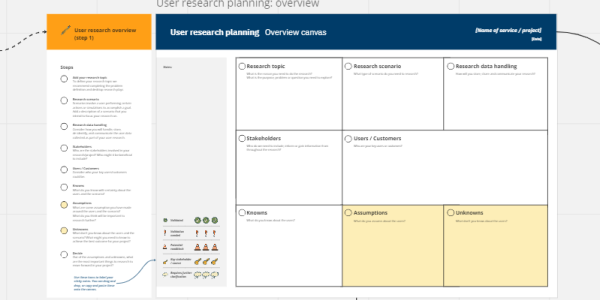Before starting your user research planning, we recommend doing the problem definition play and the desktop research play. By uncovering the problem and collecting existing research, you will have a better understanding of the problem, existing research and information around the topic, and users connected to it. That is a great starting point for doing user research planning.
Invite your participants
Calendar meeting request for user research planning
Subject:
Join us for a user research planning session for [project name]
Meeting description:
Hi [team name if sending a group invitation, or participant name if sending individual invitations]
As part of our work on [name of project], we’re looking to do some user research planning as part of the project.
The session will take about [x] minutes and there is no preparation required.
Having [you/each of you] attend will help to make sure we are including a diverse range of opinions and expertise in our project. [If conduction the session virtually include the following] We will be using Miro for this workshop].
If you would like some further insight into the activity you can read more on user research planning in the Digital service design playbook.
I look forward to your contribution to the session. [If you’re planning to record the session include the following - We will be recording the session for learning and development purposes and recordkeeping. Please let us know before the session if you don't want to be included in the recording or transcript].
The [project name] team is committed to inclusion for our events, and we appreciate the experience of inclusion is not the same for everyone. Please let us know what we can do to make our events more accessible and inclusive for you.
Kind Regards,
[Facilitator name]




